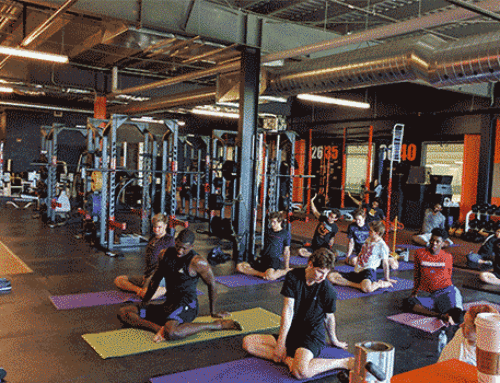
Planks, sit-ups, side-bridges are all great exercises. But do they improve or are they related to hockey performance. A group of researchers from Germany[1] joined the group of many investigators who have investigated this idea across various sports[2-6]{Bridge, 2014, Physical an[3]d physiological profiles of taekwondo athletes}, but this time for hockey!
Ten male elite rink hockey players of the German national team were tested for 1) time to exhaustion, maximum oxygen uptake, and running economy, 2) one repetition maximum bench press and half squat, 3) counter movement jump height, 4) 5 m, 10 m, and 20 m speed, and 5) 22 m agility. The rink hockey players were also tested for 6) plank, Side-bridge-left, side-bridge-right, and back extensor strength—endurance.
The authors concluded, core strength is not co-related to strength, power, speed, or agility indicators in male elite rink hockey players. These findings should be noted by coaches and scientists when testing physical fitness or planning strength and conditioning programs for male elite ice hockey players.
John Gray, Kinesiologist is not surprised by these results, “Planks and side bridge endurance have not been shown to be linked with performance. In fact it doesn’t make sense. The loads that are applied to the spine are 10x less than the loads that applied to the spine during sport, let alone during body checking.” This idea is also relevant when speaking about injury prevention, where these exercises are often used to “help prevent low back injuries.” We can’t expect a plank to protect against injury to the spine when the loads are 10x greater during a body check. However, there may be some value when we speak about the endurance necessary to skate with good neutral spine alignment, and to teach young hockey players about neural spine position– I’ll tackle that topic in a future blog post.
Our training needs to develop qualities that are directly related to the sport. We must be able to examine what are the factors that determine sport performance and then train the athlete accordingly. Trunk endurance, train with planks and side-bridges does not prepare the body to handle the loads in hockey. That does not mean that there isn’t value in doing them.
Take home points:
- Sport performance is tied to speed, power, strength, and conditioning. Core endurance training has not been linked to performance and injury prevention.
- Understanding the loads that occur in sport will help us develop training programs and strategies to maximize performance and injury prevention. This concept is called Dynamic Correspondence.
- Hoppe, M.W., et al., Relationship between core strength and key variables of performance in elite rink hockey players. J Sports Med Phys Fitness, 2014.
- Schilling, J.F., et al., Effect of core strength and endurance training on performance in college students: randomized pilot study. J Bodyw Mov Ther, 2013. 17(3): p. 278-90.
- Bridge, C.A., et al., Physical and physiological profiles of taekwondo athletes. Sports Med, 2014. 44(6): p. 713-33.
- McGill, S., et al., Movement quality and links to measures of fitness in firefighters. Work, 2013. 45(3): p. 357-66.
- Wyss, T., et al., The Swiss Army physical fitness test battery predicts risk of overuse injuries among recruits. J Sports Med Phys Fitness, 2012. 52(5): p. 513-21.
- Rogan, S., et al., [The relevance of core muscles in ice hockey players: a feasibility study]. Sportverletz Sportschaden, 2013. 27(4): p. 212-8.




